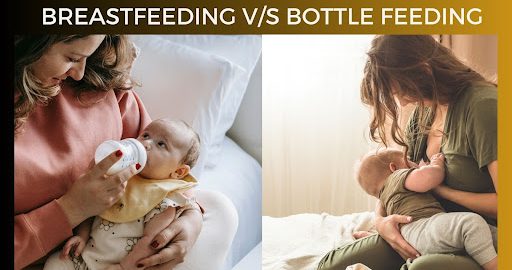
Nursing Bottle Caries: How Breastfeeding Differs from Bottle Feeding
Table of Contents:
- Introduction
- Breastfeeding vs Bottle Feeding
- Role of Sugar in Nursing Bottle Caries
- The Impact of Feeding Habits
- Preventive Measures and Recommendations
- Conclusion
Nursing bottle caries, also known as baby bottle tooth decay or early childhood caries, is a concerning dental condition affecting infants and young children. It is characterized by severe tooth decay in the baby’s primary teeth, which can lead to pain, infection, and potential complications in the future.
The development of nursing bottle caries is influenced by several factors, including the feeding method used, with breastfeeding and bottle feeding presenting distinct differences. This log aims to explore the differences between breastfeeding and bottle feeding in the context of nursing bottle caries.
Breastfeeding
Breastfeeding is the natural and recommended method for infant feeding, providing numerous benefits for both the baby and the mother. The composition of breast milk is tailored to meet the baby’s nutritional needs, containing essential nutrients, antibodies, and enzymes that support the baby’s growth and development. Furthermore, breastfeeding promotes the development of the baby’s oral muscles, which can positively impact their future oral health.
Bottle Feeding
Bottle feeding, on the other hand, involves the use of baby bottles and artificial milk or formula to feed the infant. While it can be a practical solution for some mothers, especially those who cannot breastfeed, bottle feeding presents several challenges regarding dental health.
The Role of Sugar in Nursing Bottle Caries
Sugar plays a central role in the development of nursing bottle caries. Both breast milk and formula contain natural sugars, but the concentration and delivery mechanisms differ. Breast milk has a lower sugar content and is delivered through the baby’s natural sucking action, reducing the risk of prolonged exposure. Formula, on the other hand, can contain higher sugar content and, when delivered through a bottle, can result in prolonged contact with the teeth.
Moreover, external factors such as adding sweeteners, fruit juices, or sugary drinks to the bottle can exacerbate the risk of nursing bottle caries. The bacterial activity in the mouth converts sugars into acids that attack tooth enamel, leading to the formation of cavities.
The Impact of Feeding Habits on Oral Health
Breastfeeding generally encourages healthy oral habits compared to bottle feeding. The natural mechanics of breastfeeding promote proper oral muscle development, including the jaw and tongue, which can aid in proper teeth alignment later on.
Bottle feeding, especially when practiced during bedtime or naptime, increases the risk of nursing bottle caries due to the extended exposure of the baby’s teeth to milk sugars during sleep. This can lead to rampant tooth decay, causing pain and discomfort for the child.
Preventive Measures and Recommendations
To prevent nursing bottle caries and promote optimal oral health, parents and caregivers should consider the following measures:
- Promote breastfeeding as the preferred method of infant feeding when possible, as it provides numerous health benefits and reduces the risk of nursing bottle caries.
- Limit bottle usage to times when breastfeeding is not possible or as a supplement to breastfeeding.
- Avoid putting the baby to bed with a bottle, especially one containing milk or sugary drinks, to prevent prolonged exposure to sugars during sleep.
- Practice proper oral hygiene by gently wiping the baby’s gums with a clean cloth after each feeding and introducing brushing with a soft-bristled toothbrush once the first tooth appears.
- Limit sugary foods and drinks in the baby’s diet and avoid adding sweeteners to bottles.
- Regular dental check-ups should begin as soon as the baby’s first tooth emerges or no later than their first birthday.
Conclusion
Nursing bottle caries is a preventable dental condition that can have lasting impacts on a child’s oral health if left untreated. Understanding the differences between breastfeeding and bottle feeding is crucial in promoting good oral health practices for infants and young children. By encouraging breastfeeding, limiting bottle usage, and practicing proper oral hygiene, caregivers can help reduce the risk of nursing bottle caries and ensure a healthy start for their child’s oral development.
DISCLAIMER:Please note that the prices mentioned on this page: (a) present a range (depending upon the severity of the dental condition, the technology used in treatment, type of dental products used, etc.); (b) are true as on the date of this page and may change on a later date, in accordance with the standard company policy; (c) may be subject to standard aberrations or generalizations on account of the use of AI in general Google/internet search by you.Leave a Reply
Leave a Reply
Explore More Similar Posts
Explore More Blogs


Leave a Reply